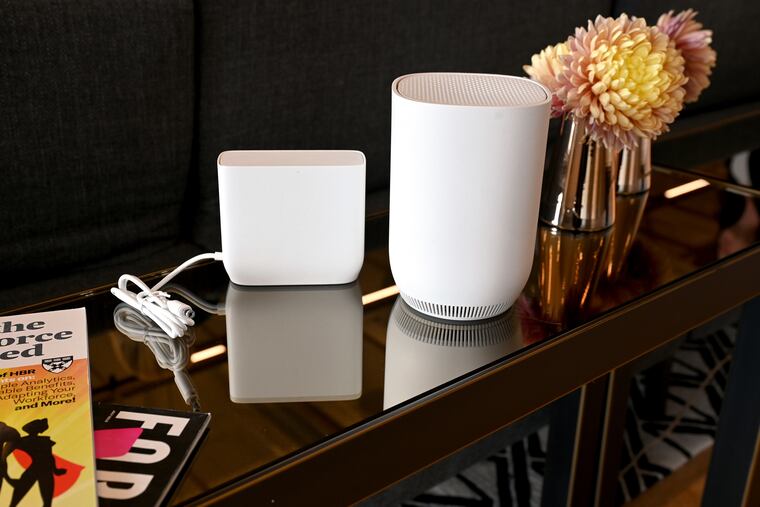Comcast can keep your WiFi on even when the power goes out with new device
Storm-Ready WiFi is made possible by a new product that customers can buy for $7 a month for 36 months, or one payment of $250. It's the first option of its kind in the United States.

An afternoon thunderstorm strikes and the power goes out in your home mid-Zoom meeting on a remote-work day.
Your kids are playing by the modem and accidentally jostle the cable, setting off an hours-long mystery as to why your internet isn’t working.
A vandal cuts fiber-optic lines in your neighborhood, interrupting your Comcast service hours before the Eagles play in the Super Bowl (a Philly nightmare that became a reality for about 17,000 Kensington-area residents in February).
All are situations that can induce panic, sidetrack your day, and cause a massive headache.
Comcast officials, however, say they have a solution.
It’s called Storm-Ready WiFi.
But it’s also “squirrel ready,” said Matt Ecker, vice president of product. “Replace the word storm” with almost any event that could interrupt — or literally eat away at — your internet service.
Storm-Ready WiFi is made possible by a new product that customers can buy for $7 a month for 36 months, or one payment of $250.
The white tabletop device — smaller than the company’s Xfinity Gateway, which combines a modem and router — comes with an unlimited cellular-data backup and a four-hour rechargeable battery. The cost pays for the device itself, and customers keep the service indefinitely, even after the portal is paid off. When not needed as a backup wireless source, the device also works as a WiFi extender, strengthening the signal in hard-to-reach areas of the home.
» READ MORE: How to improve your home WiFi without calling customer service, according to Comcast experts
Launched nationwide in August, Storm-Ready WiFi is the first of its kind to be offered by an internet provider, Comcast officials said, and the first such option in the United States.
For years, “we heard consistently from customers that they wanted to have connection through thick and thin,” Ecker said. Then the pandemic happened. Now more people work from home, at least a few days a week, and they depend on their home internet connection professionally and personally.
Mike Janove, product experience storyteller at Comcast, said just last week he got a text informing him that his home network was now connected to Storm-Ready WiFi. While he was working from his office in the city, his wife was working from home, he said, when construction workers next door accidentally disconnected their WiFi. She reported a seamless transition to the Storm-Ready WiFi.
Janove demonstrated that transition Tuesday at the Comcast Technology Center’s Product Experience Center, which offers sweeping floor-to-ceiling views of Center City and gathering spaces designed to look like living rooms. As Janove simulated how Storm-Ready WiFi would work during an outage, Ecker and a few other colleagues watched from couches and cushioned chairs.
Joking that he was acting as “Hurricane Mike,” Janove disconnected the cable from the back of the Gateway. Within seconds, an LED light turned on at the bottom of the Storm-Ready device. On the Xfinity app on Janove’s phone, which he mirrored to show on the Apple TV at the front of the staged room, he received a notification: “You’re connected with Storm-Ready WiFi.”
Unlike when customers connect to a mobile hot spot on their smartphones, customers with the Storm-Ready device should experience no disconnection or downtime as their service switches from regular WiFi to the cellular-data backup. That means no logging back in to Zoom or Teams meetings, or reentering device passcodes, Ecker said. At the most, users may experience a couple seconds of apparent buffering if they’re on a video call.
“It’s also really helpful for those moments you’re not home,” Ecker said, noting that it can keep wireless video doorbells, smart thermostats, some automatic pet feeders, and other devices up and running.
While it took more than three years for the Storm-Ready WiFi to come to fruition, Ecker said future updates, such as a longer battery life or a stronger cellular signal, are likely to be more incremental.